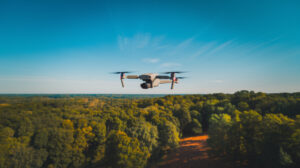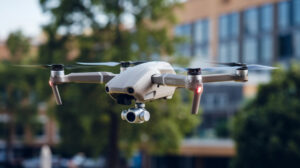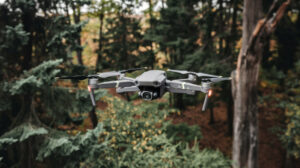The Unmanned Aerial System (UAS) Market is experiencing rapid expansion driven by advancements in drone technology, increasing defense applications, and the rising adoption of unmanned aerial systems in commercial sectors. Unmanned Aerial Systems (UAS) include remotely piloted aircraft, control stations, and communication links that facilitate autonomous and semi-autonomous flight operations. The market is evolving due to technological innovations, regulatory developments, and increasing investments in drone-based solutions. The demand for Unmanned Aerial System (UAS) Market products is rising across industries such as defense, agriculture, logistics, construction, and surveillance.
Market Overview
The Unmanned Aerial System (UAS) Market is expanding due to increased utilization of drones for surveillance, reconnaissance, and logistics. Governments and defense organizations are investing heavily in UAS for intelligence, surveillance, and reconnaissance (ISR) missions. The commercial sector is witnessing rapid adoption of drone technology for applications such as precision agriculture, infrastructure monitoring, aerial mapping, and emergency response. As the capabilities of unmanned systems continue to evolve, the demand for high-performance UAS solutions is increasing across multiple industries.
Download PDF Brochure: https://www.marketsandmarkets.com/pdfdownloadNew.asp?id=18210274
Key Drivers of the Unmanned Aerial System (UAS) Market
One of the significant factors driving the Unmanned Aerial System (UAS) Market is the growing demand for advanced drone solutions in military and defense applications. Nations worldwide are investing in unmanned aerial technologies to enhance surveillance, reconnaissance, and combat operations. The integration of artificial intelligence and machine learning in UAS is enabling autonomous operations, improving target detection, and enhancing mission efficiency.
Another critical driver of the Unmanned Aerial System (UAS) Market is the expansion of commercial applications. Industries such as agriculture, logistics, and infrastructure development are leveraging drone technology to improve operational efficiency, reduce costs, and enhance data collection capabilities. The use of UAS in precision farming, environmental monitoring, and urban planning is contributing to the market’s growth. Additionally, advancements in battery technology, lightweight materials, and real-time data transmission are improving the performance and reliability of unmanned aerial systems.
Applications of Unmanned Aerial Systems (UAS)
The Unmanned Aerial System (UAS) Market is witnessing significant adoption across defense, commercial, and civil sectors. In the defense sector, UAS is playing a crucial role in intelligence gathering, surveillance, and tactical operations. Military organizations are deploying unmanned aerial systems for border surveillance, battlefield reconnaissance, and counter-terrorism missions. The ability of UAS to operate in challenging environments without risking human lives is driving its demand in the defense industry.
In the commercial sector, the Unmanned Aerial System (UAS) Market is expanding due to applications in agriculture, infrastructure inspection, delivery services, and disaster management. Precision agriculture is utilizing drone technology for crop monitoring, soil analysis, and pesticide spraying, resulting in improved efficiency and cost savings for farmers. The logistics industry is exploring UAS for last-mile delivery solutions, enhancing supply chain operations and reducing delivery times. The construction and infrastructure sectors are using drones for site surveying, structural inspections, and project monitoring, improving safety and operational accuracy.
Regional Market Trends
The Unmanned Aerial System (UAS) Market is witnessing growth across various regions, with North America, Europe, and Asia-Pacific emerging as key markets. North America dominates the market due to strong investments in military drone programs, research and development initiatives, and commercial drone applications. The presence of leading drone manufacturers and regulatory support for UAS integration is driving market growth in the region.
Europe is also experiencing significant adoption of unmanned aerial systems, driven by advancements in drone regulations, increased demand for commercial applications, and investments in defense modernization. Countries such as Germany, the United Kingdom, and France are investing in next-generation drone technologies to enhance their military and commercial capabilities.
The Asia-Pacific region is expected to witness substantial growth in the Unmanned Aerial System (UAS) Market due to increasing defense budgets, rising demand for agricultural drones, and expanding infrastructure development projects. Countries like China, India, and Japan are focusing on indigenous drone manufacturing, technological innovations, and policy frameworks to support UAS operations.
Competitive Landscape
The Unmanned Aerial System (UAS) Market is highly competitive, with several companies investing in research and development to enhance drone capabilities. Leading players are focusing on developing advanced sensor systems, AI-driven analytics, and next-generation communication technologies to improve the efficiency and autonomy of unmanned aerial systems. Companies are also exploring strategic partnerships, mergers, and acquisitions to strengthen their market presence and expand their product portfolios. The competition in the Unmanned Aerial System (UAS) Market is intensifying as new players enter the market with innovative drone solutions catering to diverse industry needs.
Request Sample Pdf: https://www.marketsandmarkets.com/requestsampleNew.asp?id=18210274
Future Outlook
The Unmanned Aerial System (UAS) Market is expected to witness sustained growth in the coming years, driven by technological advancements, regulatory developments, and increasing adoption across industries. Emerging trends such as swarm drone technology, AI-powered autonomous flight systems, and enhanced cybersecurity measures are expected to shape the future of the market. Governments and regulatory bodies are working towards integrating UAS into controlled airspace, creating new opportunities for commercial drone operations.
As the capabilities of unmanned aerial systems continue to evolve, industries will explore innovative use cases, further expanding the potential applications of UAS technology. The growing demand for high-performance, cost-effective, and reliable drone solutions will drive continuous innovation and market expansion. The Unmanned Aerial System (UAS) Market is poised for transformative growth, revolutionizing industries and redefining the future of unmanned aviation.
The Unmanned Aerial System (UAS) Market is undergoing rapid evolution, fueled by advancements in drone technology, increasing defense applications, and expanding commercial use cases. The market is witnessing significant investments in research and development, regulatory support for drone operations, and growing demand for unmanned aerial solutions across various industries. As new innovations emerge and industry adoption accelerates, the Unmanned Aerial System (UAS) Market is set to play a pivotal role in shaping the future of aerial mobility, security, and operational efficiency.


